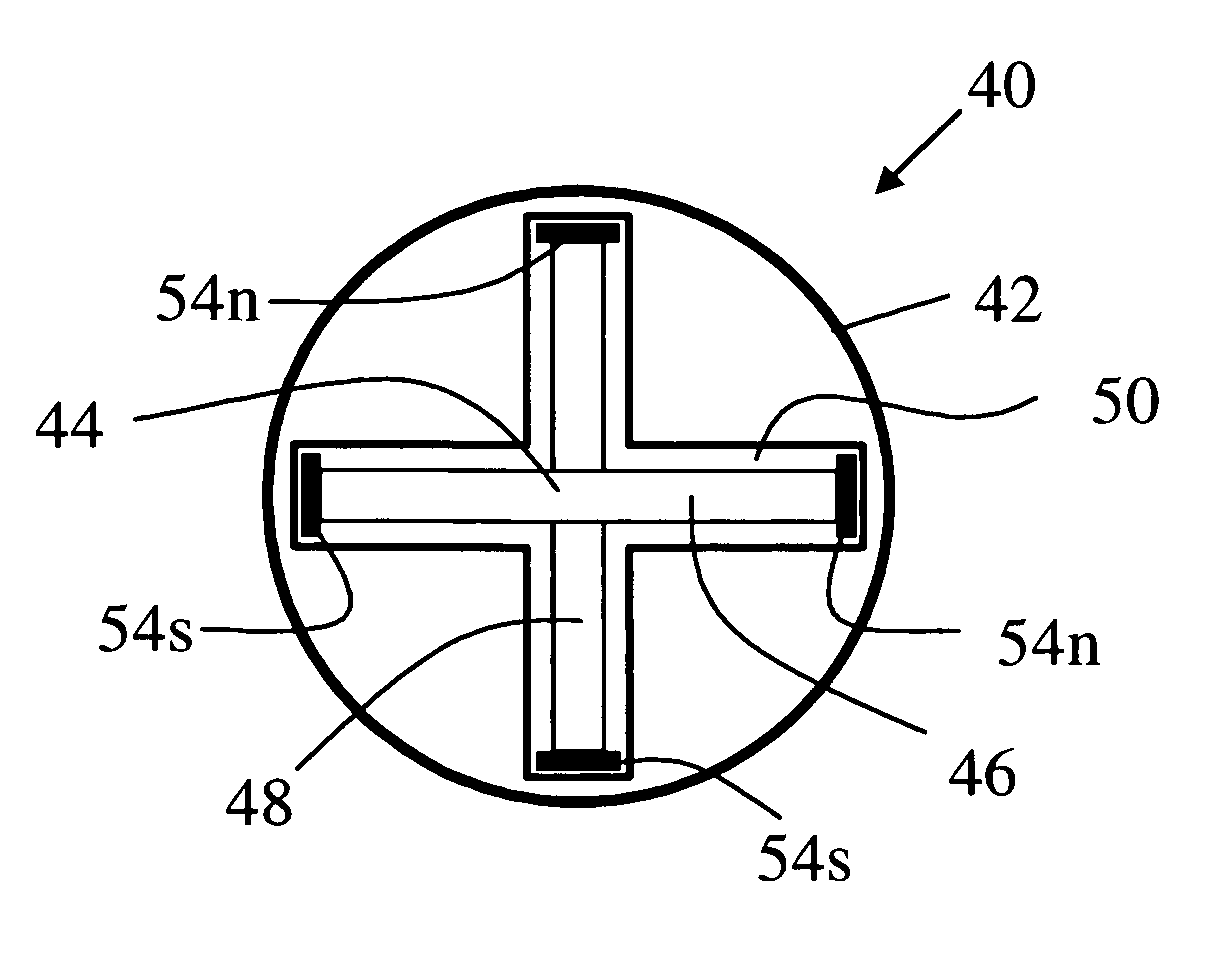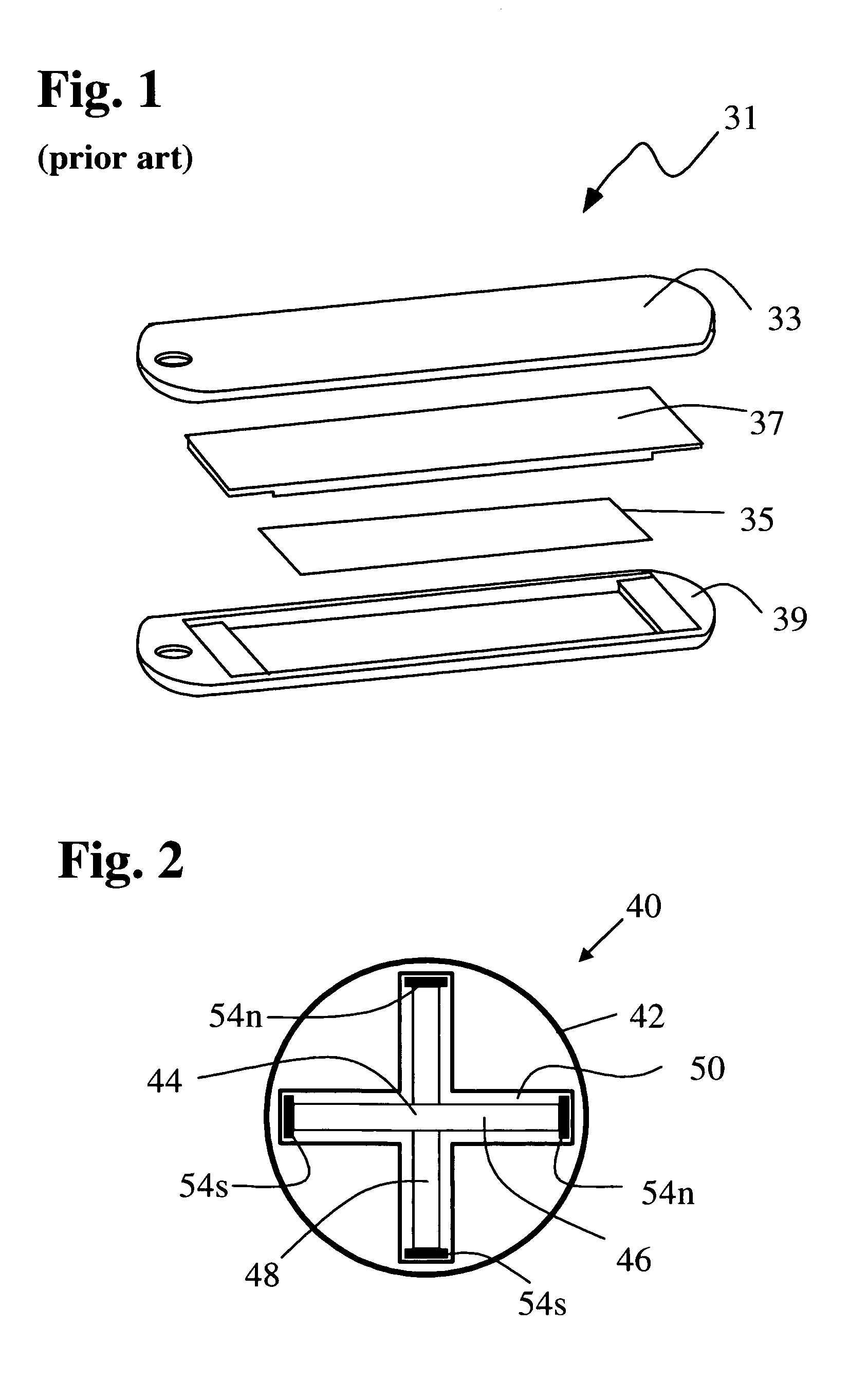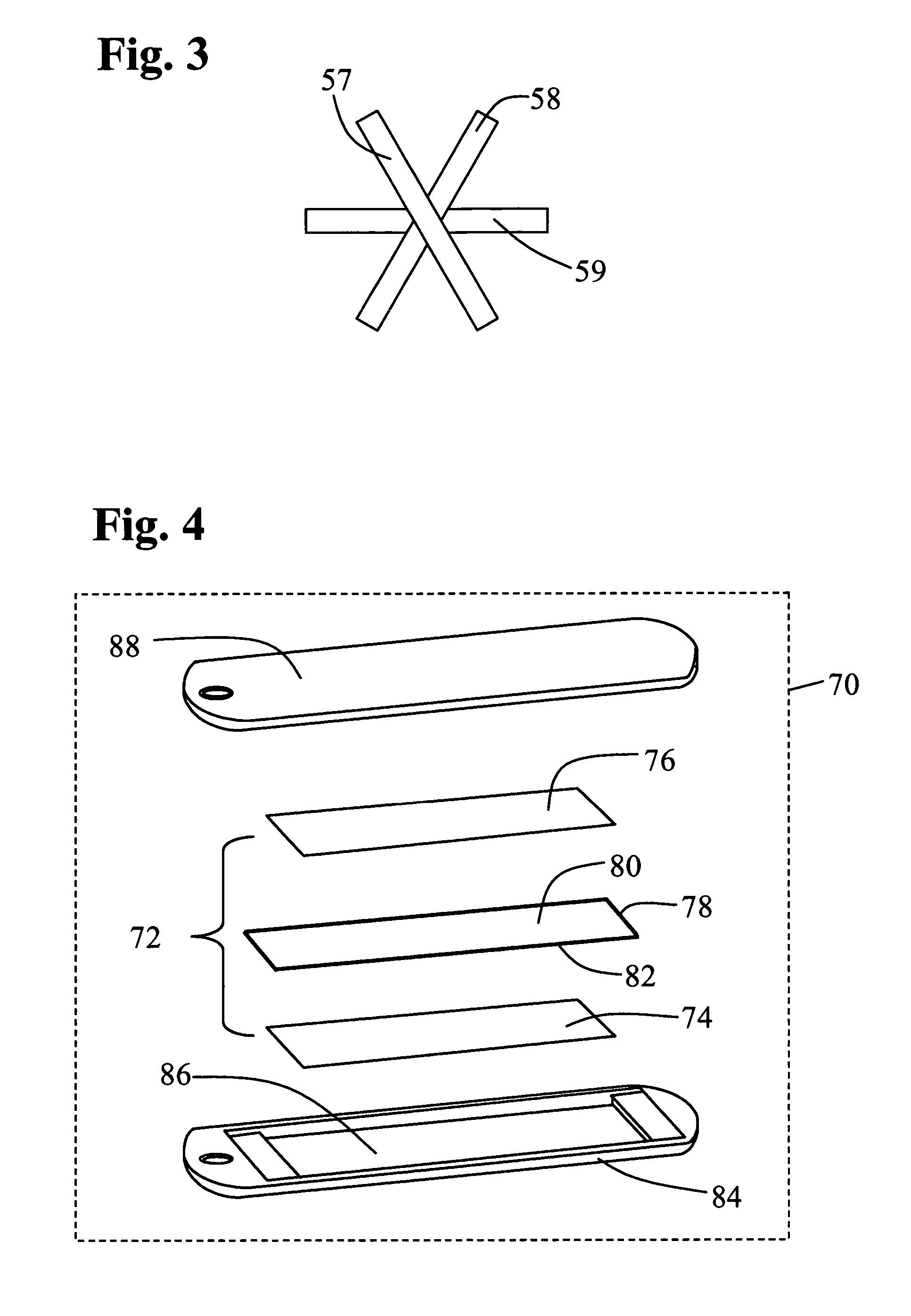Miniature magnetomechanical tag for detecting surgical sponges and implements
a technology of sponges and implements, applied in the field of system detection of surgical implements, can solve problems such as avoiding serious and potentially fatal consequences for patients, and achieve the effects of reducing or eliminating, increasing resonant operating frequency, and enhancing detection sensitivity
- Summary
- Abstract
- Description
- Claims
- Application Information
AI Technical Summary
Benefits of technology
Problems solved by technology
Method used
Image
Examples
Embodiment Construction
[0028]The present invention provides a system capable of detecting surgical implements left within a patient during surgery. The system relies on attachment of an externally detectable marker to a surgical implement, which may be any of a wide variety of devices appointed to be placed into a surgical wound cavity during a surgical procedure, typically including sponges, gauzes, instruments, probes, and various cutting, holding, and clamping devices. The remote detectability of the marker allows detection and removal of the implement prior to completion of the surgery, thereby eliminating the severe consequences that arise from retained articles.
[0029]The marker employed in the present system is magnetomechanically resonant. That is to say, the marker comprises at least one magnetomechanical element which, in the presence of a suitable alternating electromagnetic field, is caused to mechanically vibrate at a frequency which is a natural resonant frequency of the element. The vibratio...
PUM
 Login to View More
Login to View More Abstract
Description
Claims
Application Information
 Login to View More
Login to View More - R&D
- Intellectual Property
- Life Sciences
- Materials
- Tech Scout
- Unparalleled Data Quality
- Higher Quality Content
- 60% Fewer Hallucinations
Browse by: Latest US Patents, China's latest patents, Technical Efficacy Thesaurus, Application Domain, Technology Topic, Popular Technical Reports.
© 2025 PatSnap. All rights reserved.Legal|Privacy policy|Modern Slavery Act Transparency Statement|Sitemap|About US| Contact US: help@patsnap.com



